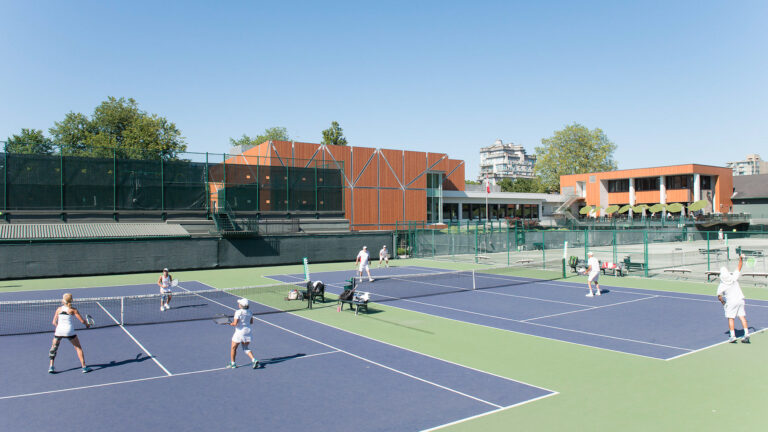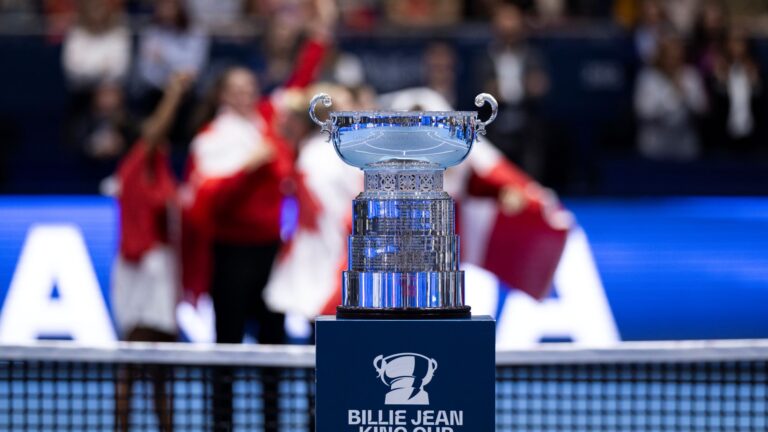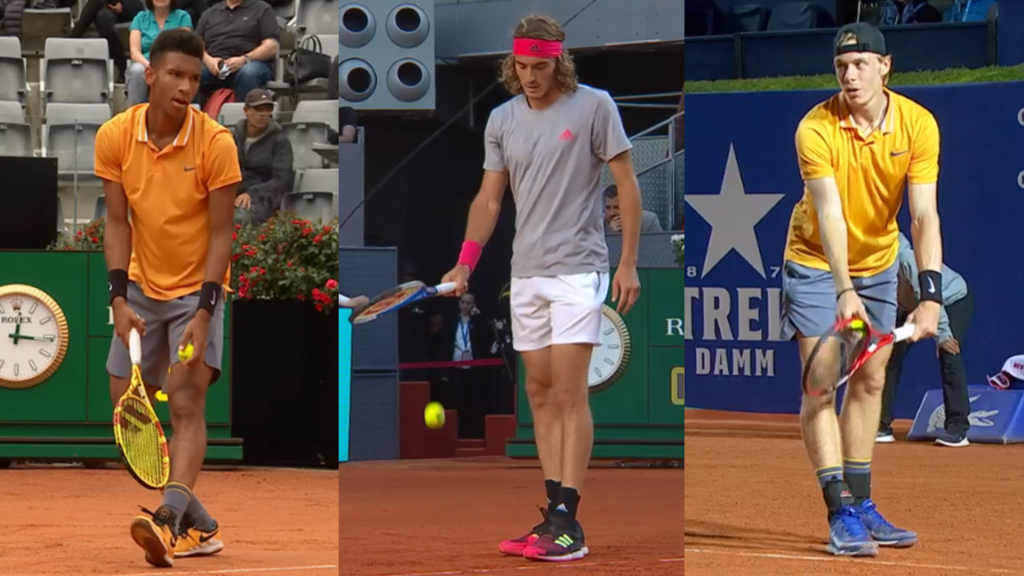
||TennisTV.com|||TennisTV.com|
Marcos Baghdatis, 18 at the time, was presented with the award as the International Tennis Federation’s World Junior Champion at the annual ITF dinner in Paris in 2004.
Baghdatis was interviewed in front of the gathering and said his goal was to be “No. 1.”
The emcee at the dinner that night, standing beside him, responded, “don’t hold your breath.”
Though that seemed unnecessarily harsh at the time, ultimately there was a lot of truth in the remark. Baghdatis, now 33 and ranked No. 128, has won four tour titles and reached the final of the 2006 Australian Open, but his best career ranking was No. 8 in 2006.
Being the No. 1 junior in the world is no guarantee of success in the pros. None of the 15 World Junior Champions, since Baghdatis was No. 1 for the 2003 year, have ever made it to a Grand Slam event final. And only two – Gael Monfils (No. 6 in 2016) and Alexander Zverev (No. 3 in 2017) – have attained a ranking inside the top-30.
Here are names of the players since 2004 to be ITF World Junior Champion – Gael Monfils (FRA), Donald Young (USA), Thiemo de Bakker (NED), Ricardas Berankis (LTU), Yang Tsung-Hua (TPE), Juan Sebastian Gomez (COL), Jiri Vesely (CZE), Filip Peliwo (CAN), Alexander Zverev (GER), Andrey Rublev (RUS), Taylor Fritz (USA), Miomir Kecmanovic (SRB), Axel Geller (ARG) and Tseng Chun Tsin (TPE).
While just two of those World Junior Champions have broken into the top-30, there are currently three players from the class of 2016 already in the top 30 – No. 7-ranked Stefanos Tsitsipas, No. 22 Denis Shapovalov and No. 30 Félix Auger-Aliassime.
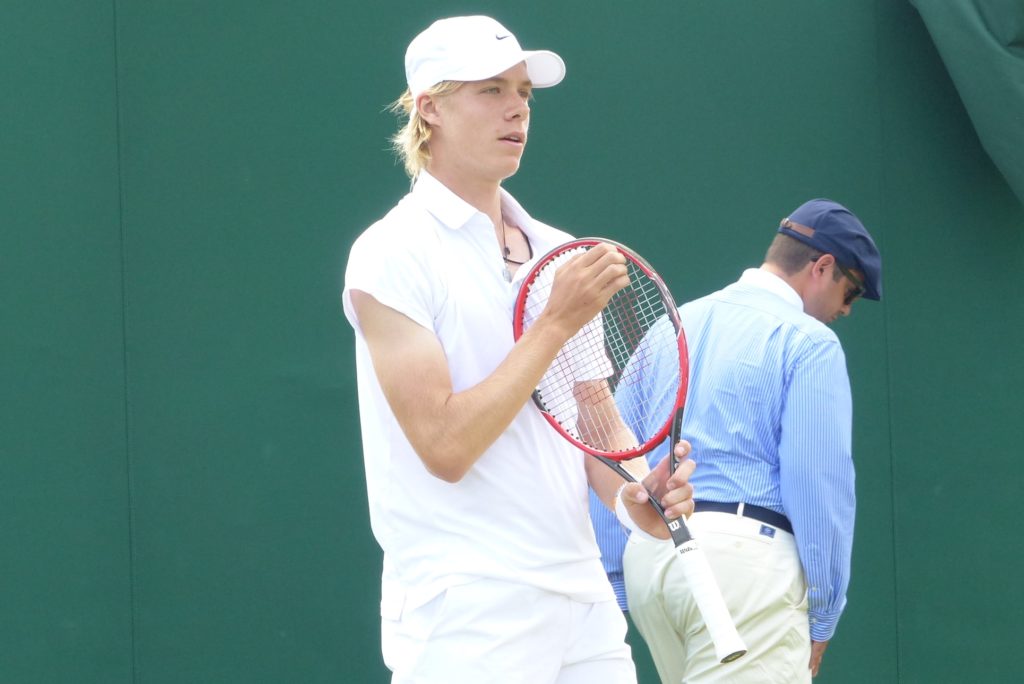
In 2016, Tsitsipas lost to Shapovalov (above as junior in 2016) in the quarter-finals of the French Open juniors and the semi-finals of the Wimbledon juniors, as well as to Auger-Aliassime in the semi-finals of the US Open juniors. He wound up No. 2 in the year-end ITF junior rankings and Auger-Aliassime at No. 4, while Shapovalov, despite being the Wimbledon winner, had no ranking as a result of not playing enough tournaments to qualify.
Those rankings are also misleading because they combine singles and doubles results – as well as because a player like Shapovalov, 17, didn’t play any junior events again after winning Wimbledon in 2016 while champion Auger-Aliassime, 16, and semi-finalist Tsitsipas, 18, no longer played juniors after the US Open.
The No. 1 that year was Miomir Kecmanovic of Serbia. Now 19, he currently ranks No. 83 and lost in the final round of qualifying for this week’s Italian Open in Rome.
Tsitsipas’ sublime form in his 7-5, 3-6, 6-2 win over No. 4-ranked Alexander Zverev in last week’s Madrid Open quarter-finals, and his 6-4, 2-6, 6-3 upset of No. 2 Rafael Nadal in the semi-finals, has vaulted him even further to the head of the 2016 junior class. But at 20, he’s eight months older than Shapovalov and exactly two years older than Auger-Aliassime.
The three have become consensus favourites to eventually win Grand Slam titles and make it to No. 1 in the rankings. And that would be nothing but good for the sport because all three have attractive, all-round game-styles as well as plenty of charisma.
It will be interesting to see if they are able to leapfrog the generation of Milos Raonic, 28, Kei Nishikori, 29 and Grigor Dimitrov, who turns 28 on Thursday, as the main challengers to the domination of Roger Federer, Nadal and Novak Djokovic. And also if they can bypass an intermediate group led by Zverev, 22, Dominic Thiem, 25, and the wildly-unpredictable Nick Kyrgios, 24.
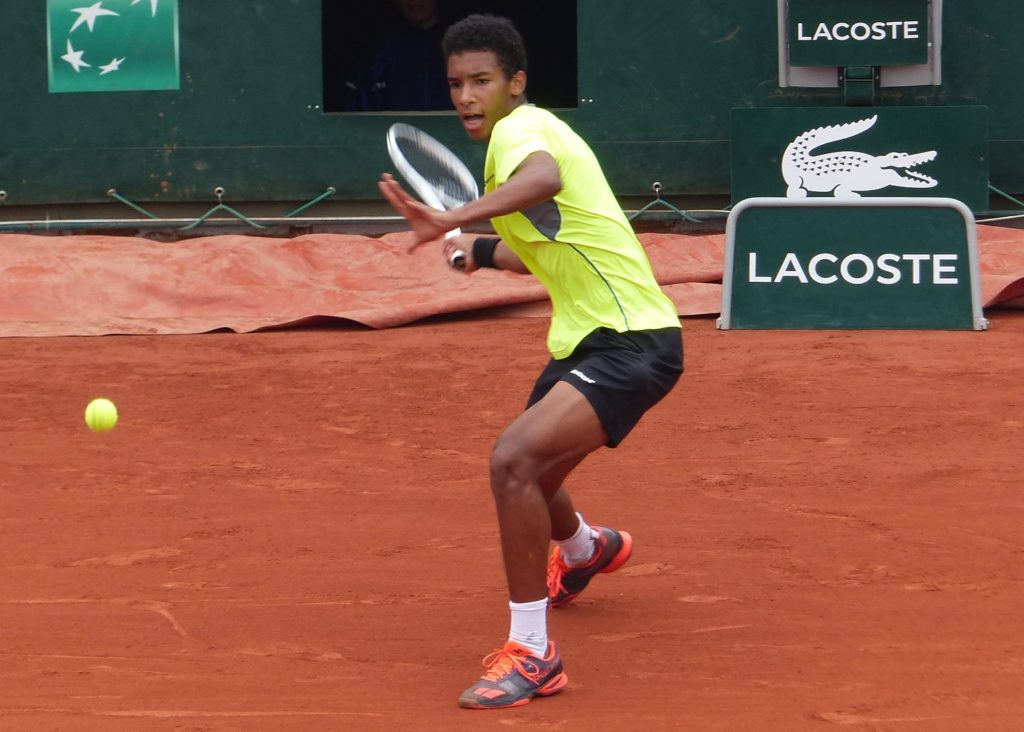
Tsitsipas, Shapovalov and Auger-Aliassime (above as a junior in 2016) all announced their arrivals as teenagers – 19-year-old Tsitsipas beating No. 7 Thiem on his way to the 2018 final (Nadal) in Barcelona, 18-year-old Shapovalov upsetting Nadal when he got to the 2017 Rogers Cup semi-finals (Zverev) in Montreal and 18-year-old Auger-Aliassime reaching the final of an ATP 500 event (Rio de Janeiro) and the semi-finals of a ATP Masters 1000 (Miami) in recent months.
While Tsitsipas is older, and has wins over Federer (2019 Aussie Open), Nadal (2019 Madrid) and Djokovic (2018 Rogers Cup) as well as more than twice as many ranking points (3,790) as Shapovalov (1,470) and Auger-Aliassime (1,349), the two Canadians have shown a definite superiority in their head-to-head meetings with the Greek – including match-ups this year.
See below (junior matches in Italics):
Shapovalov vs. Tsitsipas – 4-2
2019 Miami Open R16: Shapovalov 4-6, 6-3, 7-6(3)
2018 Monte Carlo R64: Tsitsipas 6-3, 6-4
2018 Australian Open 1R: Shapovalov 6-1, 6-3, 7-6(5)
2016 Wimbledon SF: Shapovalov 4-6, 7-6(5), 6-2
2016 Roland Garros QF: Shapovalov 6-4, 6-2
2015: Orange Bowl (Florida) R16: Tsitsipas 6-2, 6-1
Auger-Aliassime vs Tsitsipas – 4-0
2019 Indian Wells 2R: Auger-Aliassime 6-4, 6-2
2016 US Open SF: Auger-Aliassime 6-4, 7-5
2015 Eddie Herr (Florida) SF: Auger-Aliassime 7-5, 6-4
2015 Canadian International QF: Auger-Aliassime 6-3, 4-6, 6-4
Making predictions about any of these three making the top-10 is already a done deal because Tsitsipas is currently there, but the race for No. 1 and a first Grand Slam title remains very much in play.
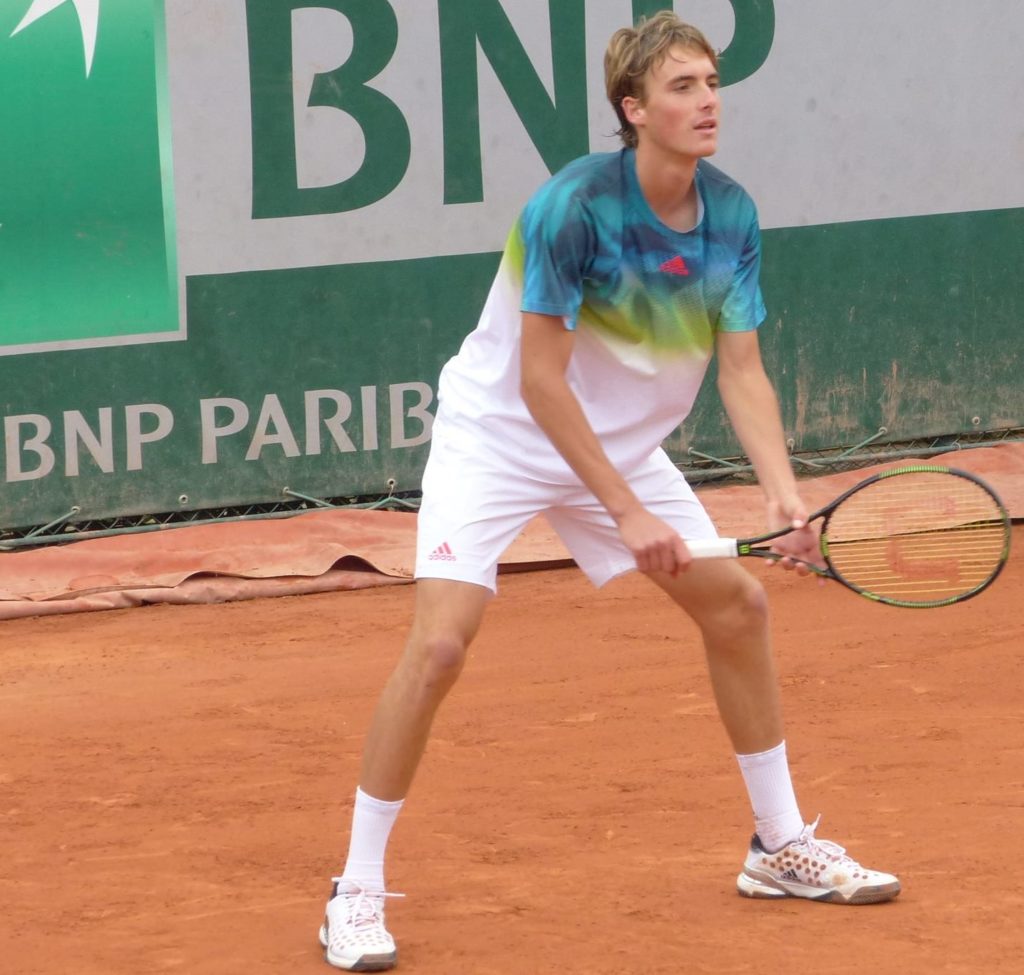
Tsitsipas (above as a junior in 2016) showed remarkable composure, concentration and willpower in his virtuoso performance against Nadal in the Madrid semi-finals on Saturday. He played almost as if he was in a trace – oblivious to everything going on around him. It’s a gift that, with his exceptional talent as a mover and ball-striker, has him ahead of Shapovalov and Auger-Aliassime for the moment. It will be fascinating to see how long that lasts and, similarly, what happens when he next faces his two Canadian rivals.
KIKI MASTERS MADRID
Kiki Bertens won the Madrid Open on Saturday with a 6-4, 6-4 victory over Simona Halep. The match featured one of the stranger points that will be seen this year between two top-flight players.
Leading by a set and 4-3, 15-30, Bertens hit a smash that was going way long but the ball hit a leaping Halep – meaning Bertens won the point at an important moment in the match.
When you can't quite get out of the way 🙈😬😂@kikibertens @Simona_Halep #MMOPEN pic.twitter.com/TuMYzb4IyU
— wta (@WTA) May 11, 2019
Here’s the Q&A about the goofy point from Bertens’ post-final media conference.
- In your whole life have you ever won a point by hitting someone with the ball from the back of the court?
A. KIKI BERTENS: No. No. No, first time. Really ugly (laughing).
It was nice to see a fun interaction between winner Bertens and runner-up Halep during the presentation ceremony (below).
And with that, we say a week well done 🙌@kikibertens @Simona_Halep #MMOPEN pic.twitter.com/0OuMJ0K7rU
— wta (@WTA) May 11, 2019
The victory for Bertens, the fourth – Charleston (2018), Cincinnati (2018) and St. Petersburg (2019) – at a Premier level event for the 27-year-old Dutchwoman, moves her ranking up to a career-best No. 4.
She missed the Canada – Netherlands Fed Cup World Group II opening round in February in s‘-Hertogenbosch because she wanted to focus more on WTA tournaments. That would appear to be paying off as she earned $588,000 (US) for her victory in Madrid – later saying she planned to celebrate with a meal of “pizza and gelato” followed by a good night’s sleep.
BIANCA ON THE BALL
Missed the clay 😋😍 pic.twitter.com/V84mryDCfE
— Bianca (@Bandreescu_) May 10, 2019
It was encouraging to see Bianca Andreescu back on the court last week working out with Tennis Canada fitness trainer Clément Golliet at the Rafael Nadal Academy in Majorca.
Andreescu should be ready to return to action in two weeks at the French Open.
VIVA ITALIA

The Internazionali BNL d’Italia – a.k.a. the Italian Open – has lots of unique features, including probably the tour’s most steeply-inclined seating in the ‘Centrale.’
Tennis scoring in the Italian language is music to the ears – with two of our favourites being quindici – pari or 15-all, and the even more lyrical cinque giochi pari – five games all. Then there’s also gioco Djokovic or ‘game Djokovic,’ a rhyme which aligns with the most common pronunciation of the Serb’s surname.
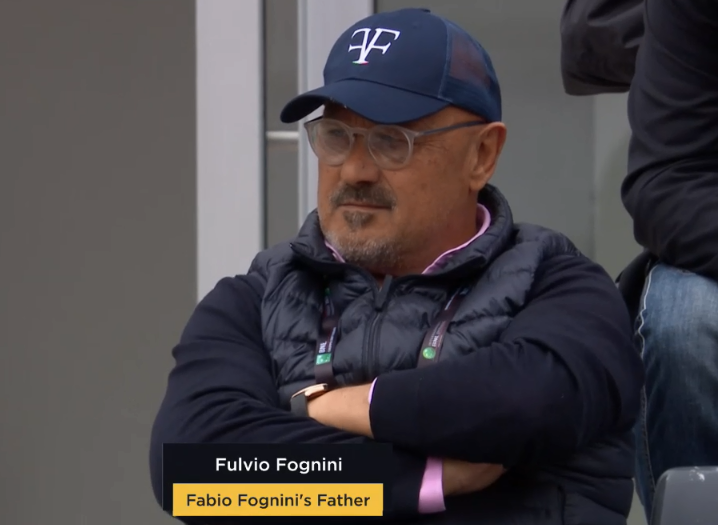
For many years the television coverage of the Italian Open featured shameless cutaways to women in the crowd. There are not nearly as many of those nowadays. More common are cutaways like the one here to people like Fabio Fognini’s father during the Felix Auger-Aliassime – Borna Coric match on Monday.
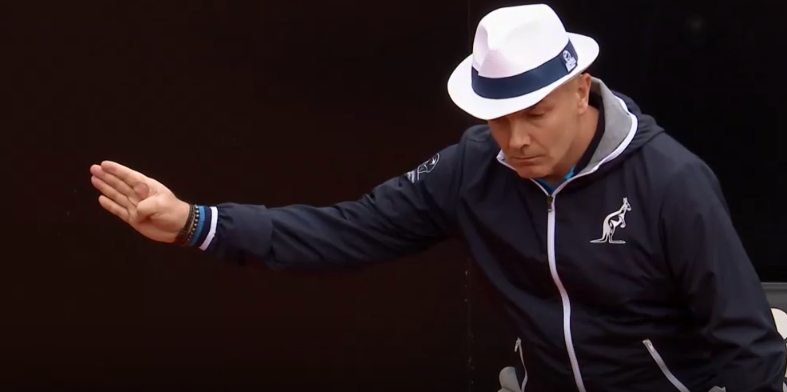
This line umpire in the Centrale is signaling ‘out,’ but he could just as easily have been wishing everyone a pleasant ‘arrivederci.’
Feature Photo: TennisTV.com
